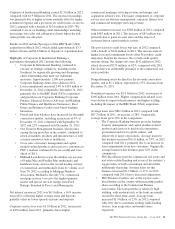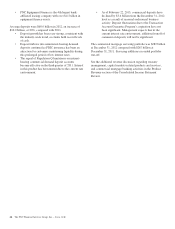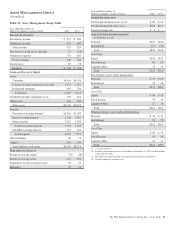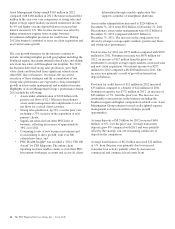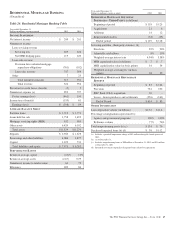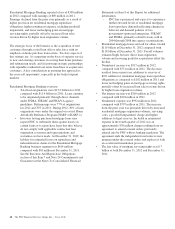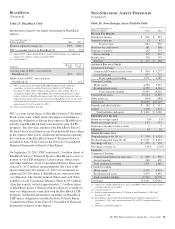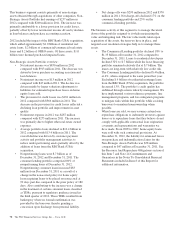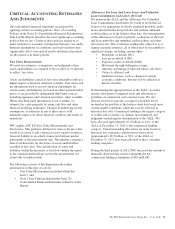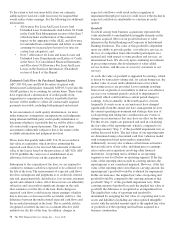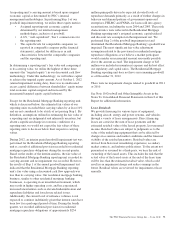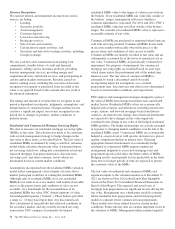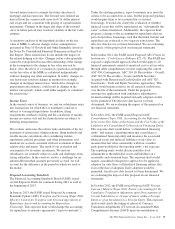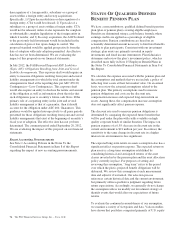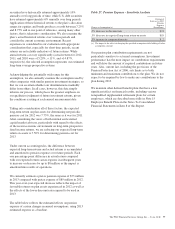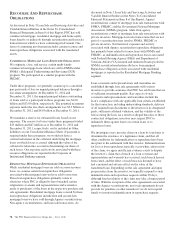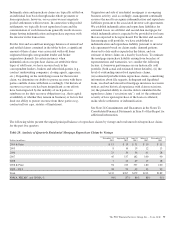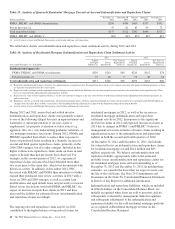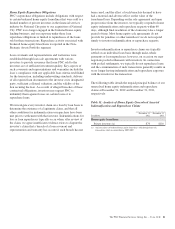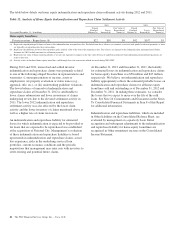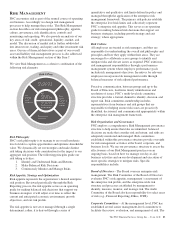PNC Bank 2012 Annual Report Download - page 92
Download and view the complete annual report
Please find page 92 of the 2012 PNC Bank annual report below. You can navigate through the pages in the report by either clicking on the pages listed below, or by using the keyword search tool below to find specific information within the annual report.A reporting unit’s carrying amount is based upon assigned
economic capital as determined by PNC’s internal
management methodologies. In performing Step 1 of our
goodwill impairment testing, we utilize three equity metrics:
• Assigned reporting unit economic capital as
determined by our internal management
methodologies, inclusive of goodwill.
• A 6%, “well capitalized”, Tier 1 common ratio for
the reporting unit.
• The capital levels for comparable companies (as
reported in comparable company public financial
statements), adjusted for differences in risk
characteristics between the comparable companies
and the reporting unit.
In determining a reporting unit’s fair value and comparing it
to its carrying value, we utilize the highest of these three
amounts (the “targeted equity”) in our discounted cash flow
methodology. Under this methodology, we will infuse capital
to achieve the targeted equity amount. As of October 1, 2012
(annual impairment testing date), there was no unallocated
excess capital (difference between shareholders’ equity minus
total economic capital assigned and increased by the
incremental targeted equity capital infusion).
Except for the Residential Mortgage Banking reporting unit,
which is discussed below, the estimated fair values of our
reporting units exceeded their carrying values by at least 10%
and are not considered to be at risk of not passing Step 1. By
definition, assumptions utilized in estimating the fair value of
a reporting unit are judgmental and inherently uncertain, but
absent a significant change in economic conditions of a
reporting unit, we would not expect the fair values of these
reporting units to decrease below their respective carrying
values.
During 2012, an interim period goodwill impairment test was
performed for the Residential Mortgage Banking reporting
unit as a result of additional provision recorded for residential
mortgage repurchase obligations during the second quarter.
Based on the results of the interim analysis, the fair value of
the Residential Mortgage Banking reporting unit exceeded its
carrying amount and no impairment was recorded. However,
the results of Step 1 of the annual goodwill impairment test
indicated that the Residential Mortgage Banking reporting
unit’s fair value using a discounted cash flow approach was
less than its carrying value. Our residential mortgage banking
business, similar to other residential mortgage banking
businesses, is operating in an unsettled environment, which
may result in higher operating costs, and has experienced
increased uncertainties such as elevated indemnification and
repurchase liabilities and foreclosure related issues.
Additionally, the current level of refinance volumes is not
expected to continue indefinitely given that interest rates have
been low for a prolonged period of time. During the fourth
quarter, we recorded additional provision for residential
mortgage repurchase obligations of approximately $254
million principally driven by expected elevated levels of
repurchase demands primarily as a result of further changes in
behavior and demand patterns of government-sponsored
enterprises, FHLMC and FNMA, for loans sold into agency
securitizations, including the years 2004 and 2005. These risk
characteristics were reflected in the Residential Mortgage
Banking reporting unit’s assigned economic capital utilized
and discount rate assumption in the impairment test. We
performed Step 2 of the goodwill impairment test and
determined that Residential Mortgage Banking’s goodwill was
impaired. The most significant fair value adjustment
assumption related to the provision for residential mortgage
repurchase obligations as we believe a market participant
would consider an incremental amount reasonably possible
above the amount accrued. The impairment charge of $45
million was included in noninterest expense and did not affect
our regulatory and capital ratios. The Residential Mortgage
Banking reporting unit does not have any remaining goodwill
as of December 31, 2012.
There were no impairment charges related to goodwill in 2011
or 2010.
See Note 10 Goodwill and Other Intangible Assets in the
Notes To Consolidated Financial Statements in Item 8 of this
Report for additional information.
Lease Residuals
We provide financing for various types of equipment,
including aircraft, energy and power systems, and vehicles
through a variety of lease arrangements. Direct financing
leases are carried at the sum of lease payments and the
estimated residual value of the leased property, less unearned
income. Residual values are subject to judgments as to the
value of the underlying equipment that can be affected by
changes in economic and market conditions and the financial
viability of the residual guarantors. Residual values are
derived from historical remarketing experience, secondary
market contacts, and industry publications. To the extent not
guaranteed or assumed by a third-party, we bear the risk of
ownership of the leased assets. This includes the risk that the
actual value of the leased assets at the end of the lease term
will be less than the estimated residual value, which could
result in an impairment charge and reduce earnings in the
future. Residual values are reviewed for impairment at least
annually.
The PNC Financial Services Group, Inc. – Form 10-K 73


